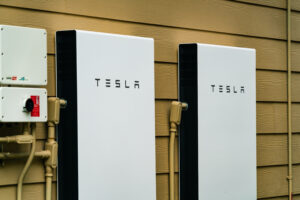The solar energy industry is shining brighter than ever. With advancements in technology, increasing adoption of renewable energy, and ambitious global sustainability goals, solar power is not just a trend—it’s the future. This future holds the promise of a cleaner environment, reduced energy costs, and groundbreaking innovations that can transform the way we power our world.
From smarter grids to cutting-edge solar applications in transportation and agriculture, the possibilities are as bright as the sun itself! These exciting developments are set to redefine energy use for businesses, homeowners, and the planet, paving the way for a brighter, more sustainable future.
Advancements in Solar Panel Technology
Solar panel technology has come a long way since its inception, and the future holds even more exciting breakthroughs. Two of the most promising innovations are bifacial panels and perovskite solar cells.
Bifacial Panels: Unlike traditional panels, bifacial panels can absorb sunlight from both sides, significantly increasing energy output. These panels are particularly effective in reflective environments, such as rooftops or snow-covered areas, where sunlight bounces back to the underside of the panel.
Advanced Materials & Manufacturing Techniques: Companies and researchers around the world are continually experimenting with new ways to put together solar panels, with materials that enhance flexibility and lightweight properties of the finished product. Advances like these could make cells easier to produce and promise higher efficiency than traditional silicon-based panels – though it will be a while until they hit mass adoption. While they may eventually help lower production costs, their real value lies in making solar energy more versatile and adaptable to different applications.
Rather than waiting for future developments, investing in solar technology today offers immediate benefits, including cleaner energy and reduced reliance on nonrenewable sources. In sunny states like California, these innovations are already paving the way for solar to become a prominent feature of homes and businesses, showcasing the potential for even greater efficiency in the years ahead.
Solar Energy Storage: The Key to Maximizing Efficiency
One of the biggest challenges in solar energy is storage. After all, the sun doesn’t shine 24/7. Fortunately, advancements in solar battery storage technology are addressing this issue and making solar energy a more reliable and viable solution.
Lithium-Ion Batteries: These have become the gold standard in energy storage, offering excellent energy density and efficiency. However, researchers are working on even better options.
Solid-State Batteries: These next-generation batteries promise greater energy capacity, faster charging, and longer lifespans. They also reduce safety risks, as they are less prone to overheating.
Energy storage systems like those offered by Enphase and Solaredge, trusted names in the solar industry, allow homeowners to store excess solar energy for use during cloudy days or dark nights. On a larger scale, utility companies are investing in massive battery storage facilities to ensure a consistent supply of solar energy to the grid.
Solar Grid Integration: Creating a Smarter, Greener Grid
As solar energy adoption grows, the need for smarter, more efficient energy management becomes increasingly vital. Enter the smart grid: a sophisticated network that leverages advanced software, sensors, and artificial intelligence (AI) to optimize the production, storage, and distribution of energy. Smart grid technology is essential in ensuring that renewable energy sources like solar power are fully utilized while maintaining a stable and reliable energy supply.
AI in Energy Management: Artificial intelligence plays a central role in the success of smart grids. By analyzing energy demand patterns, weather forecasts, and solar production levels, AI can predict energy needs and allocate power to where it’s needed most. For example, during peak sunlight hours, AI algorithms can prioritize sending surplus solar energy to storage systems or to areas with high demand. This not only reduces energy waste but also enhances the overall efficiency of the grid. Homeowners using the latest monitoring apps from Enphase and Solaredge will have access to new “AI-optimized” modes for their batteries, to sell when grid prices are highest and achieve a return on their solar investment even faster.
Grid Balancing and Energy Storage
Solar energy production is inherently variable, with peaks during sunny days and drops during cloudy weather or at night. Innovations in grid integration address this variability by ensuring that excess power generated during the day is either distributed to other areas or stored for future use. Advanced energy storage systems, such as lithium-ion and solid-state batteries, are key to enabling this balance. Additionally, utilities are now employing “virtual power plants,” where distributed energy resources—like solar panels and home battery systems—are aggregated and managed as a single, cohesive energy source. Some homeowners may be able to offer up their systems as contributors to these larger networks for a modest payout where programs are available near them.
Smart grids are critical for maintaining energy reliability and security, especially in regions with high solar penetration. As more homes and businesses connect to these grids, the transition to renewable energy becomes smoother and more sustainable.
Future Applications of Solar Energy
The versatility of solar energy has opened up opportunities across various industries, and many of these advancements are already making an impact. Here’s a look at some applications that demonstrate the broad potential of solar energy:
Transportation: Solar-powered vehicles and charging stations are reducing reliance on fossil fuels. Innovations like solar canopies over parking lots and highways lined with solar panels not only provide power for electric vehicles (EVs) but also show how solar energy can integrate into everyday infrastructure.
Agriculture: Agrivoltaics, the practice of combining agriculture and solar energy, is gaining momentum. Studies show that certain crops thrive under solar panels, where the shade helps regulate temperature and moisture levels. Livestock also benefit from the shade, which can improve their welfare while naturally controlling weed growth. These advancements show how solar energy supports sustainable farming practices.
Urban Infrastructure: Building-integrated photovoltaics (BIPV) are transforming urban spaces by incorporating solar panels into building materials like windows and roofs. While skyscrapers and commercial buildings are adopting these technologies, homeowners can also benefit from smaller-scale solutions like solar shingles, which offer a sleek, energy-efficient alternative to traditional panels.
These applications illustrate how advancements in solar energy are enhancing sustainability and efficiency across sectors while providing practical solutions for residential energy needs. By harnessing these innovations, homeowners can play an active role in shaping a greener future.
Projected Future Growth of Solar Energy
The solar energy industry is experiencing remarkable growth, fueled by government incentives, technological advancements, and a growing demand for cleaner, renewable energy sources. While the cost of solar technology has stabilized in recent years, skyrocketing utility prices are making solar energy an increasingly attractive investment for homeowners and businesses alike.
According to the International Energy Agency, solar energy is on track to become the world’s largest source of power by 2050. In the U.S., states like California are leading the way with ambitious clean energy targets and incentives for solar installations. As utility rates continue to climb, choosing solar is becoming less about waiting for costs to drop and more about taking control of long-term energy expenses.
The contrast between the rising cost of traditional energy and the stability offered by solar power underscores why now is the time to act. Solar energy not only helps reduce dependency on utility companies but also provides a sustainable, cost-effective way to meet future energy needs.
Meeting Global Sustainability Goals with Solar Power
Solar energy is a cornerstone of efforts to combat climate change and build a sustainable future. By reducing reliance on fossil fuels, solar power significantly lowers carbon emissions, making it an essential tool in achieving net-zero goals.
While international initiatives like the UN’s Sustainable Development Goals highlight the importance of renewable energy, the impact is just as critical at a local level. For example, states like California are setting ambitious renewable energy targets, demonstrating how solar power can help meet sustainability goals while directly benefiting communities.
The scalability and efficiency of solar energy make it an unparalleled resource in addressing both environmental challenges and local energy needs. From cleaner air to reduced energy costs, the benefits of solar power align closely with the broader push for sustainability.
New Economic Opportunities in Solar Energy
The solar energy industry is not only transforming the way we generate power—it’s also driving local economic growth. The solar sector is one of the fastest-growing job markets in the U.S., creating countless opportunities for skilled workers across many sectors, including manufacturing, installation, and research.
Beyond financial benefits, working in solar energy offers the chance to contribute to the community in meaningful ways. Jobs in the solar industry help improve local quality of life by fostering a cleaner environment and supporting sustainable energy practices. Solar workers often take pride in knowing their efforts directly benefit the planet and future generations.
As technology advances and solar energy becomes more widespread, the industry will continue to provide meaningful, honest labor that strengthens local economies and enhances the quality of life for all.
The Bright Future of Solar Energy
The future of solar energy is brimming with potential. Advancements in technology, innovative applications, and robust growth projections make it clear that solar energy will play a central role in shaping a sustainable and prosperous future.
As we move forward, solar power isn’t just about clean energy—it’s about transforming industries, creating jobs, and building a greener planet for generations to come.
Interested in going solar? Contact Energy Service Partners to learn how our residential solar solutions in California can reduce energy costs and support your sustainability goals.
Are you a solar dealer or installer? Explore the many benefits of partnering with Energy Service Partners through our comprehensive solar dealer program, designed to empower your business with the resources, support, and growth opportunities you need to succeed in the booming solar industry.

